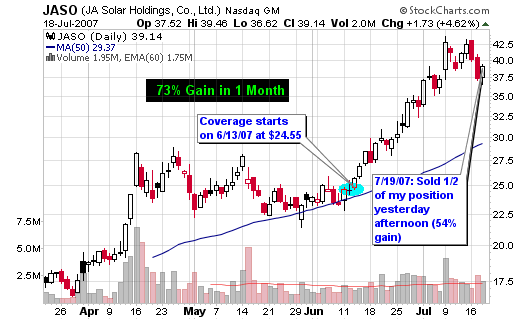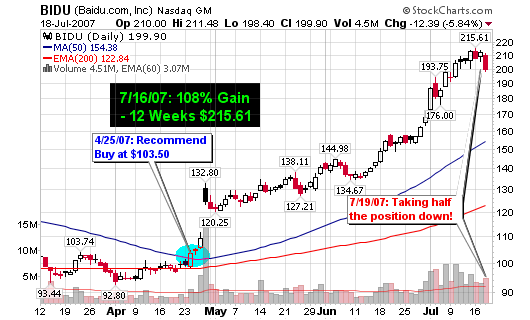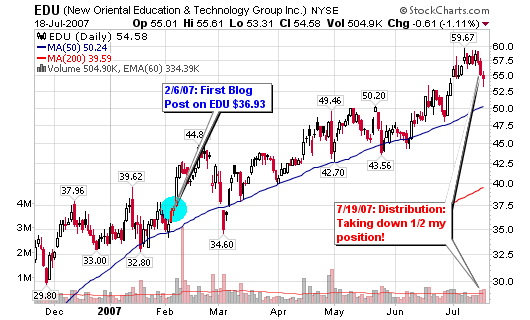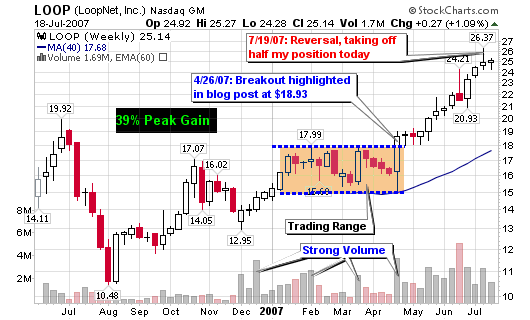It’s been a quiet week and I have been having some issues with my blog. The home page loads quickly but the all other pages are taking extra time to load (much slower than normal). My host is looking into the issue as it is not the theme since it happens with every theme I try (not the plug-ins either). Let me know if anyone has a suggestion as to what it may be (mySQL, database, etc…?).
It’s the summer and volume is typically quiet and profits have been very handsome in 2007 so I started to sell shares yesterday in JASO. After doing my research last night, I have decided to take down at least half my position in four other holdings:
BIDU, EDU, LOOP and MA

See the attached charts to understand why I am looking to capture gains. I see many leading stocks showing some exhaustion signals and far too many of them are extended from their 200-d moving averages. I am not taking down my entire position as I would like to allow profits to run further if this up-trend has another leg. Some may think that is greedy but I am not concerned because my sell stops are in place so I won’t get hurt if they continue to reverse.

My plan is simple: realize a portion of gains while allowing for further gains but protecting what is left on the table. I am also taking profits because my objective in each trade above has been exceeded.
Leave a comment and let me know what you are doing with your positions (buying, selling or holding).
What you are thinking and what is your plan at this point in time?





Connect with Me